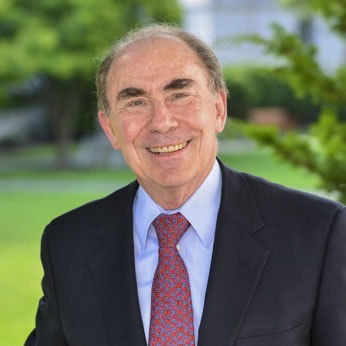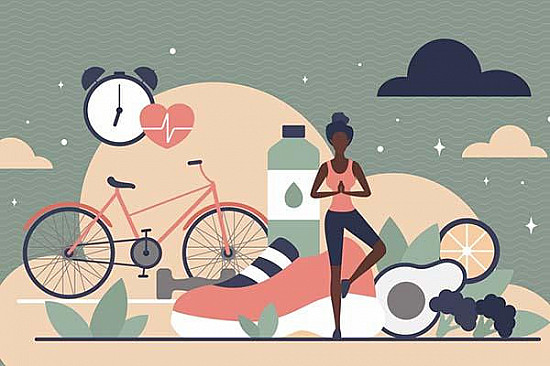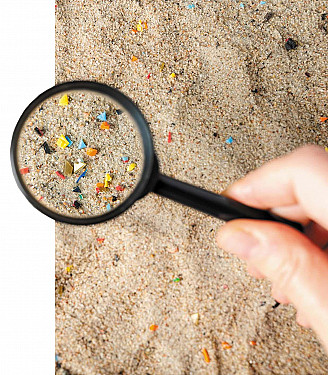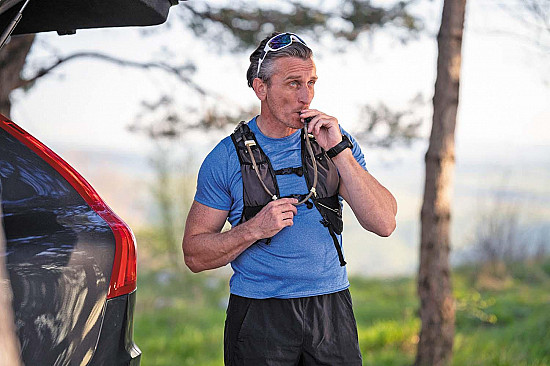Do you know about these summer breathing hazards?
High heat and humidity are among triggers that can cause lung conditions to flare.
- Reviewed by Anthony L. Komaroff, MD, Editor in Chief, Harvard Health Letter; Editorial Advisory Board Member, Harvard Health Publishing

For people with lung problems, such as asthma or chronic obstructive pulmonary disease (COPD), seasonal weather effects are well known to stir up symptoms. Autumn hazards include mold and pollen; winter brings cold, dry air; and spring showers us with pollen or fine particulate matter (such as wildfire smoke). Summer also has breathing risks, although many people are less familiar with them.
Summer offenders
One of the chief contributors to summertime symptom flares is hot air, made worse if it’s also humid, stagnant (without a breeze), or very dry. It can feel suffocating, and indeed it can make the airways narrow and restrict breathing. Doctors have several theories about why that happens.
Irritated nerves. “Breathing hot air might make nerves in the lungs twitch, causing spasms, inflammation, and constricted airways,” says Dr. Nicholas Nassikas, a pulmonologist at Harvard-affiliated Beth Israel Deaconess Medical Center. He also studies how the environment affects breathing.
Widened blood vessels. Breathing hot air might make your body think it needs to cool the lungs. It does that by widening nearby blood vessels, so they can carry more blood (and heat) away from the lungs. “As the blood vessels get bigger, surrounding tissues can swell, causing the airway to shrink and get tighter. Then you might wheeze, cough, or get chest tightness,” Dr. Nassikas says.
Faster breathing. “When you’re overheated, your body cools off by sweating and also by releasing heat through the breath — that’s why we breathe faster when it’s hot. But if you have lung disease, it can be hard to get air out of your lungs, leaving little room to get fresh air back into them. Fast breathing makes that worse,” Dr. Nassikas says.
Additional risks
Climate change has worsened weather conditions that affect the lungs. “We’re seeing higher temperatures and more hot, humid days, even in months that are normally cool. Pollen season is starting earlier and lasting longer, which is a problem for people with asthma and allergies,” Dr. Nassikas says.
Other aspects of climate change that can irritate the lungs include
- increased levels of ozone, an air pollutant that forms in the presence of heat
- increased levels of fine particulate matter in the air from more frequent wildfires, which can worsen COPD and asthma symptoms
- more frequent, intense dust storms
- more frequent, intense rainstorms, hurricanes, and flooding, leading to more mold in the air — a problem for people with asthma.
What you can do
If you have a lung condition and you’re experiencing (or worried about) more wheezing, chest tightness, shortness of breath, or coughing, ramp up your defenses.
Keep your inhaler handy. If your doctor has prescribed one or more inhaled medications for your lung condition, keep them with you at all times, even if you have mild lung disease.
Pay attention to transitions. Going from cool indoor air to a blast of hot, humid outdoor air (or vice versa) can cause sudden breathing difficulty. To avoid this, Dr. Nassikas advises taking a puff of your inhaler 15 to 30 minutes before the transition.
Stay in air-conditioned spaces. If you have air conditioning, stay inside during the hottest part of the day, and schedule outings for the morning or evening, if possible. Get a HEPA filter to reduce pollutants in the air. If you don’t have air conditioning, spend the hottest part of the day in a place that does, such as a public cooling center, library, community center, or shopping mall.
Use a fan. Consider using an electric fan or a handheld, battery-driven (rechargeable) fan ($10 and up). Take the portable version wherever you go. “For many people, the simple sensation of air blowing on the face makes them feel better and breathe easier. The fan also keeps you cool by blowing heat off your skin,” Dr. Nassikas says. Note: A fan might not keep you cool if the surrounding air is hot. If so, wet your skin, even with a spray bottle or a wet wipe; as the fan helps moisture on your skin evaporate, it will take heat with it.
Dress appropriately. Lightweight, loose-fitting garments allow air to get to your skin, promoting heat loss to keep you cool when you sweat. Include a hat when you go outside. And consider wearing clothes with cooling technology. For example, some garments are made of a special fabric that’s activated with water and stays damp for a long period, continually pulling heat from your body.
Stay hydrated. Drink lots of fluids and eat watery foods (such as watermelon or soup) to maintain hydration, which keeps your body working and thins mucus buildup in the lungs. If your drinks and foods are nice and cold, they help lower your body’s core temperature, too.
Take a cool shower or bath. If you’re overheated, immerse yourself in water that’s cooler than your body temperature. Once out of the water, stand in front of a fan. If you can’t take a shower or bath, submerge your hands, forearms, and elbows in ice water for up to five minutes to send cooled blood moving through blood vessels back to your core (including your lungs).
Consider an alert button. When breathing becomes difficult, a wearable emergency button can get you help in a hurry, whether it’s calling 911 or contacting someone in another room. “And ask a friend or neighbor to check on you periodically,” Dr. Nassikas says, “especially during heat waves.”
Image: © LordHenriVoton/Getty Images
About the Author

Heidi Godman, Executive Editor, Harvard Health Letter
About the Reviewer

Anthony L. Komaroff, MD, Editor in Chief, Harvard Health Letter; Editorial Advisory Board Member, Harvard Health Publishing
Disclaimer:
As a service to our readers, Harvard Health Publishing provides access to our library of archived content. Please note the date of last review or update on all articles.
No content on this site, regardless of date, should ever be used as a substitute for direct medical advice from your doctor or other qualified clinician.
















